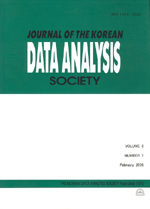매출액성장율, 부채비율, 그리고 성장기회에 따라 내부금융이 R&D투자에 미치는 영향
The Relevance Between R&D Investment and Internal Cash Flows: Focuses on Changes of Sale, Debt Ratio, and Growth Opportunity
- 한국자료분석학회
- Journal of The Korean Data Analysis Society (JKDAS)
- Vol.12 No.3
-
2010.061663 - 1675 (13 pages)
- 22

이 연구에서는 2000년에서 2008년까지의 기간에 걸쳐 우리나라 유가증권시장과 코스닥시장에 상장된 기업표본을 대상으로 기업의 내부금융이 R&D투자에 미치는 영향을 분석하였다. 특히 이 연구에서는 분석대상 기업표본을 매출액성장율(높은 매출액성장율 vs. 낮은 매출액성장율), 부채비율(높은 부채비율 vs. 낮은 부채비율) 및 성장기회(높은 성장기회 vs. 낮은 성장기회)로 구분하여 분석하였다. 본 연구의 분석결과 내부금융은 R&D투자의 주요 자금원천이며, 내부금융이 증가할수록 R&D투자도 함께 증가하는 양(+)의 관련성이 있음을 보여주고 있다. 또한, 이러한 양(+)의 관련성은 매출액성장율, 부채비율, 그리고 성장기회에 따라 유의적인 차이가 발생하고 있었다. 이 결과는 향 후 정부당국이 R&D투자와 관련된 정책을 수립하는데 중요한 근거로 이용될 수 있을 것으로 기대된다.
The study empirically investigates the relevance between R&D investment and Internal cash flows over the period of 2000-2008 in the Korea stock market and Kosdaq Market. Especially, the study splits sample firms into several groups by changes of sales, debt ratio, and growth opportunity. Empirical result of this paper indicates that internal cash flows are the significance source of R&D investment. The result also shows that the relevance between internal cash flows and R&D investment differs according to changes of sale, debt ratio and growth opportunity. The results of this paper may provide government with empirical evidence in planning R&D policy in the Korean stock markets and Kosdaq market.
1. 서론
2. 선행연구
3. 연구가설 및 연구모형
4. 실증분석 및 결과해석
5. 결론
참고문헌
(0)
(0)